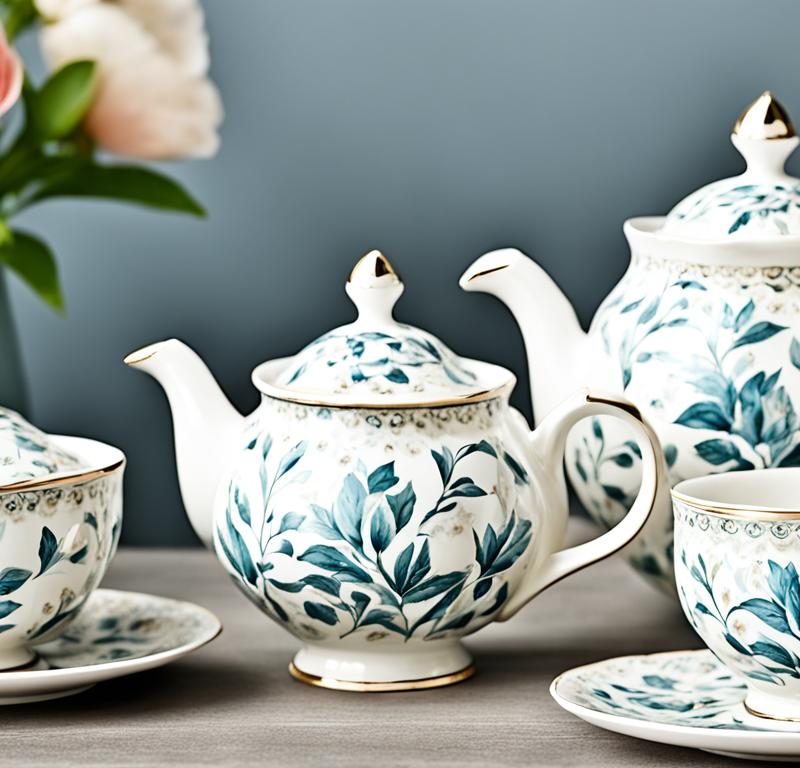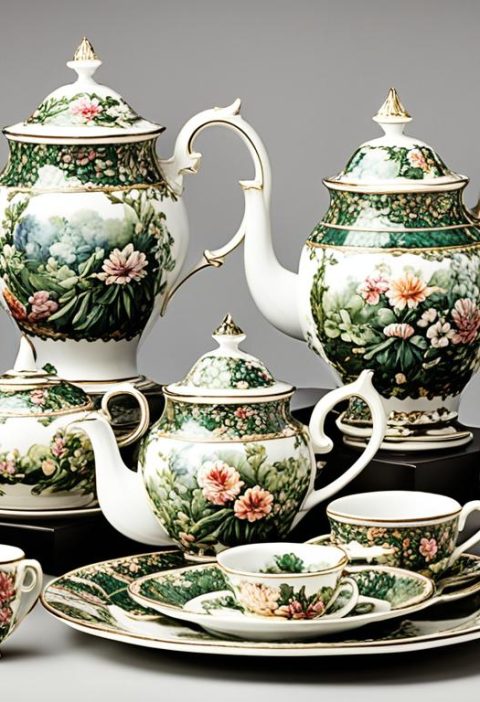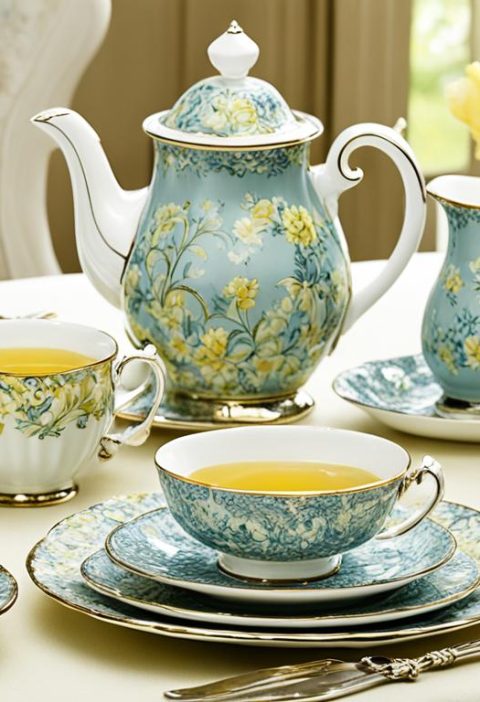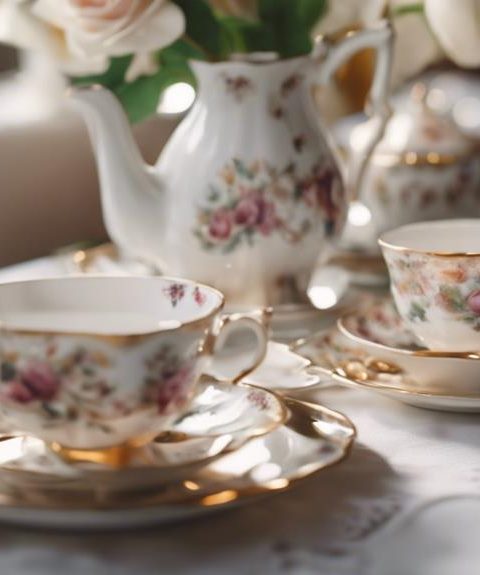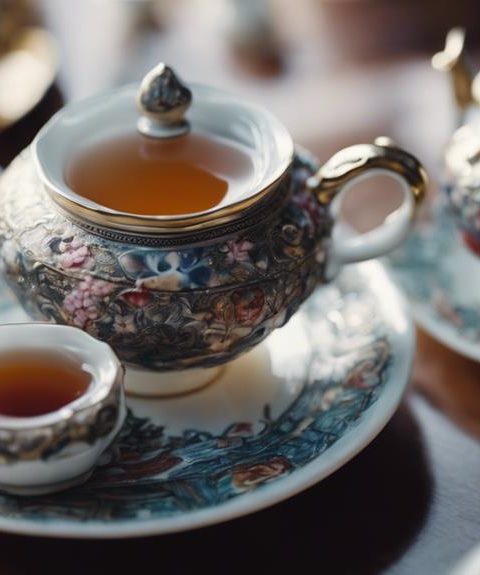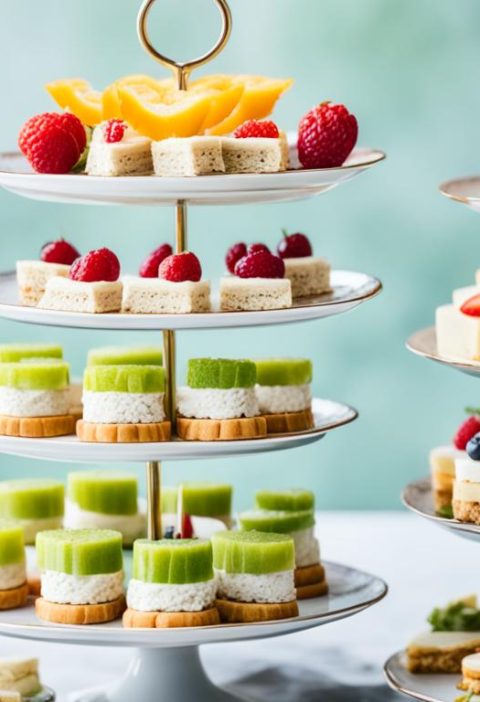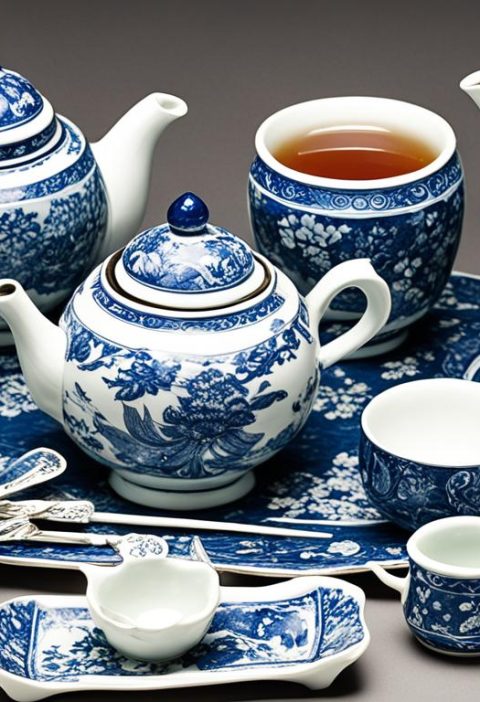Since the 17th century, Brits have cherished antique tea sets. These sets include teapots, cups, saucers, and jugs. Valuable ones mimic Chinese teapots from the early 1700s, Staffordshire stoneware from the 1750s, and Wedgwood pieces from the 1780s. Also, 19th-century bone china and Royal Worcester sets are worth a lot.
When looking for these treasures, pay attention to their marks, quality, design, and age. This helps determine their value to collectors.
Key Takeaways
- Antique tea sets have been collected in Britain since the 17th century.
- Valuable antique tea sets include imitations of Chinese teapots, Staffordshire salt-glazed stoneware, Wedgwood creamware and Jasperware, bone china sets, and Royal Worcester sets.
- Collectors should consider the markings, quality, pattern, authenticity, and age of tea sets when determining their value.
How can I verify the authenticity of a china tea set?
Found a china tea set and unsure if it’s real? Here’s what you can do to check:
1. Examine the markings
Check the set’s bottom for marks. These include the maker, where it’s from, and sometimes the date made.
2. Research the markings
Look up the marks online or in books. This can reveal the maker or key facts. Compare with known marks to confirm authenticity.
3. Check the quality
Look at the materials and how it’s made. Real china tea sets are top-quality, made of porcelain or bone china. Focus on smooth glazes, pattern details, and the pieces’ weight.
4. Research the pattern
See if the pattern is from a well-known maker. They often have documented patterns. A match can mean the set is real.
5. Consult experts or appraisers
If still unsure, talk to experts. They know a lot and can help verify the set.
6. Look for signs of age
Look for signs like glaze cracks or wear. These show it may be a true antique. Newer sets won’t have these signs.
7. Consider the provenance
Know where the set has been. A clear history of who owned it helps prove it’s real. Look for any old documents or certificates.
8. Be cautious of deals that seem too good to be true
Be careful with very cheap or unusual tea sets. They might not be real. Know the market before you buy.
9. Utilize online resources
Use the internet to find others who know about tea sets. Post pictures and ask for advice from collectors. They can offer valuable insights.
With careful steps and research, you can confirm if a china tea set is authentic.
Are there specific hallmarks, stamps, or signatures that indicate a genuine and valuable set?
When you’re looking for a real and valuable tea set, key features to watch for are specific hallmarks, stamps, and signatures. These clues tell you a lot about the set’s true worth and if it’s genuine. They can show things like who made it, where it’s from, and even when it was created.
By checking these marks, you get insights into its past. For instance, a manufacturer’s mark might display the producer’s name, letting you dig into their history and quality. Knowing the set’s origin adds to its charm and value. Marks for when it was made help you see its rarity and history.
Finding an artist’s signature boosts the set’s value. It signifies craftsmanship by a well-known designer or artist.
Patterns are also key in telling if a set’s real and unique. Knowing these can help spot prized pieces among the rest.
Keep a sharp eye out for fake marks, though. Make sure you know what real ones look like. Looking closely at the mark for its quality can also shed light on its authenticity.
Examples of Genuine Tea Set Markings:
| Marking | Description |
|---|---|
| Manufacturer’s Mark | A unique symbol or logo to identify the making company of the tea set. |
| Country of Origin Stamp | Tells you which country the tea set comes from. |
| Date Mark | Shows when the tea set was made, marking its age and value. |
| Artist’s Signature | Highlights the creator’s craft, adding to the set’s worth. |
| Pattern Name or Number | Helps you recognize and value the design of the tea set. |
Getting to know these marks can help you pick out the real treasures. Whether you’re collecting or buying, it’s smart to understand these features.
Always do your research, talk to experts, and look at the set up close. This way, you can be sure about its value and authenticity.
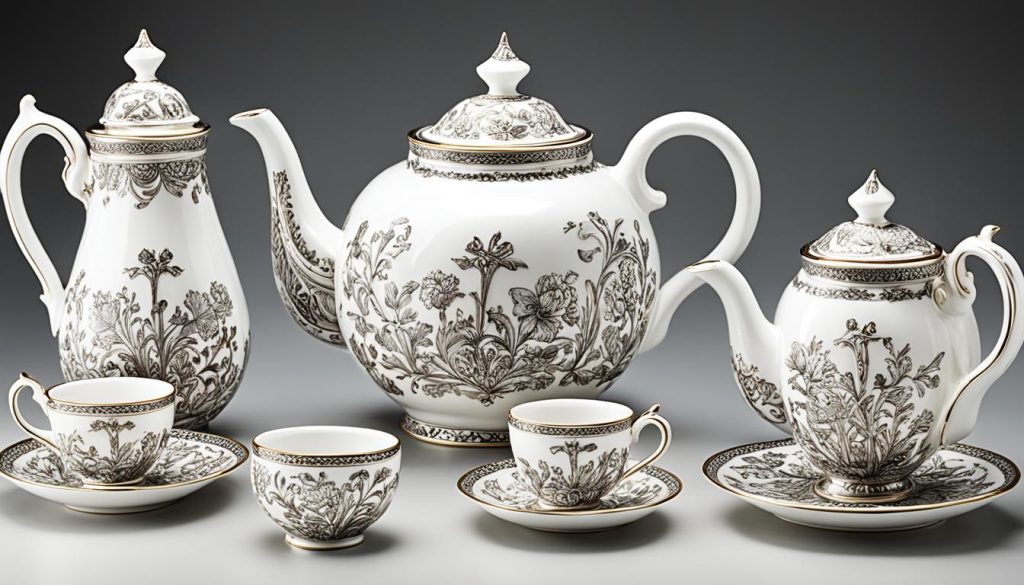
What signs of wear, damage, or repair should I be cautious of when assessing a china tea set’s value?
Checking for wear, damage, or repair is vital in valuing a china tea set. These problems can lower its worth. Here’s what to look for:
Crazing
Crazing is the network of fine lines on china from age or quick temperature changes. Some people see crazing as proof of the set’s age and authenticity. But too much can make a set less valuable.
Chips, Cracks, and Stains
Any chips or cracks in the set can drop its value a lot. Focus on the rims, handles, and spouts of the pots and cups. If they’re stained and it won’t clean off, that’s not good for the value either.
Gilding Wear
For sets with gold or silver gilding, ensure it’s not worn or faded. The gilding should look good overall. If it doesn’t, the set might not be worth as much.
Repairs
Spot any fixes on the tea set. A well-repaired piece can still be valuable if the repairs are good. Make sure the repair work is top-notch and hard to spot.
Fading or wear of paint
Check the painted details for fading or wear. Bright, well-preserved paint can make the set more valuable. But if the paint’s really faded, the set might not charm collectors as much.
Looking closely at these features can help you judge a tea set’s value better. It’s a smart step for anyone adding to their collection.
How does the rarity of a china tea set’s pattern or design influence its value?
A china tea set’s pattern can greatly affect its value. If the set has a rare or special design, it’s worth more. This is because collectors really want these unique sets.
Moreover, if a tea set has a design tied to history or was made in few numbers, it’s more valuable. Collectors love sets that tell a story. They see value in the set’s historical and cultural importance.
But, a tea set must also be in good shape to keep its value. Even if it’s rare, a damaged set will be worth less. Collectors look for sets that are in excellent condition.
In the end, what collectors find attractive is key to a set’s value. Sets with designs that many collectors love are more valuable. This love can come from the set’s beauty, quality, or its cultural importance.
